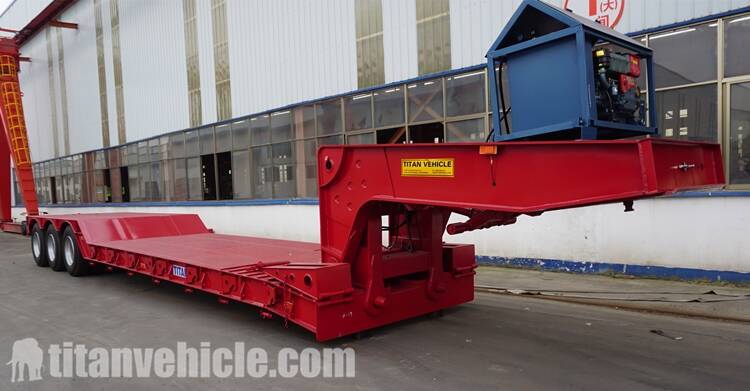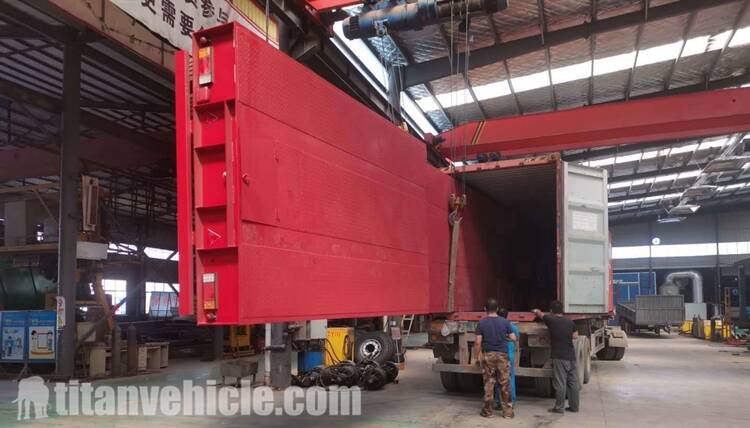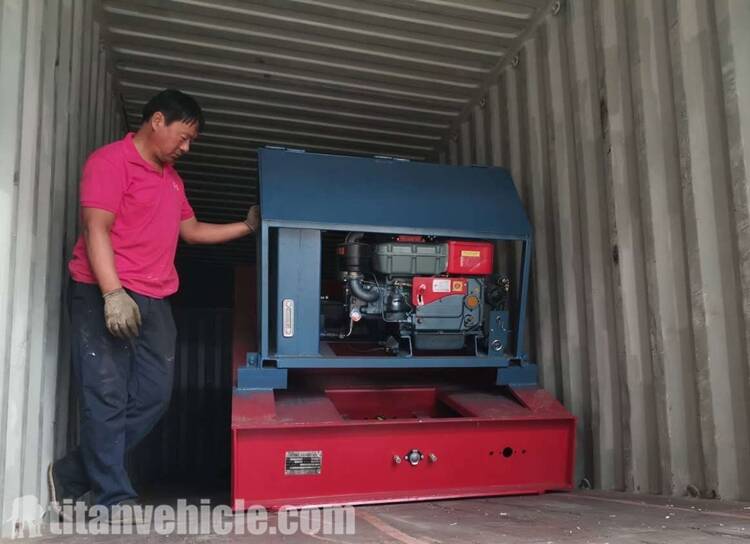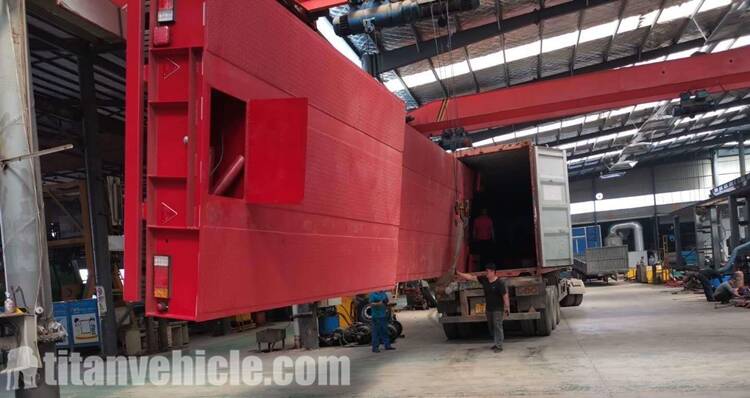
80ton 3 Axle Hydraulic Gooseneck Trailer for Sale in Tanzania
Our Tanzania customer saw the hydraulic gooseneck trailer for sale locally and contacted us on TITAN website through Google search. At first, the customer only asked about the accessories of lowbed semi trailer, did not show that he wanted to buy a semi trailer. The customer asked some questions about the semi trailer accessories, our sales answered his questions and sent more detailed pics, parameters to him.
The customer received some suggestions on the semi trailer accessories, he was satisfied with our service. A month later, the customer contacted us again and decided to order the hydraulic gooseneck trailer in advance for their own business.
TITAN will pay a return visit to every customer who has purchased a semi-trailer, whether it is used normally and whether there is a problem so that it can be solved in time and can extend the service life to a greater extent. This is also the exclusive benefit of TITAN, not only pre-sales, sales, and after-sales services must be in place.

Bumper pull trailer and hydraulic gooseneck trailer
When choosing a trailer, among all the choices you will make, there is no greater impact on bumpers than bumper trailers and hydraulic gooseneck trailers. Each option has its own advantages, but the difference between gooseneck and bumper hook is sometimes not obvious. How do you decide which hook to choose?
Throughout the course of this article, you will understand the difference between gooseneck hooks and bumper pull hooks, and the advantages and disadvantages of each type. At the end, you will have enough information to find out which type of hook is right for you and your tractor.

The most common type of hitch is bumper pull, also known as a drag or tagaron trailer. The name is a bit misleading because the trailer is not actually connected to the trailer's bumper. Instead, the tongue of the trailer fits over a spherical hook that protrudes from the frame at the rear of the vehicle.
For those who use the trailer for the first time, the bumper hook is also very beneficial. This is a more common way of hanging than a gooseneck, so it's less daunting. In addition, compared with gooseneck hooks, first-time trailer owners are more likely to install bumper hooks on their SUVs or pickup trailers. People who use a trailer for the first time will also realize that bumper-pull trailers have a normal turning radius, so the trailer will follow the tractor when turning.

However, bumper trailers do have some disadvantages. A smaller trailer means that there is less space in the living area or locker room in the trailer, and if you drag horses or livestock, this also limits the number of animals you can transport. For example, if you want to haul more than two horses, you may need a gooseneck trailer.
In fact, you need to be extra careful when transporting overall heavier cargo. You need to make sure that your trailer has the correct weight rating. If this is not the case, you may encounter some problems during the journey, such as lack of stability and loss of control, including trailer shaking.

These are not issues that most novice trailer owners consider. As more and more novice trailers have bumper pull, it is not surprising that bumper pull trailers are involved in more trailer accidents.
On the other hand, hydraulic gooseneck trailers are usually owned by senior trailer owners. The gooseneck is easily confused with the fifth wheel trailer because the two hook types are very similar. The difference is that the gooseneck trailer slides on the spherical hook of the pickup trailer bed, while the fifth-wheel trailer is fixed to the pickup trailer using an articulated plate hook. Semi trailers use the same type of hooks.
The biggest advantage of the gooseneck trailer over the bumper rod is its stability. Since the tongue weight of the trailer is above the rear axle of the trailer and not at the rear of the frame, the possibility of the trailer swinging has been minimized. This increased stability also means that gooseneck trailers can withstand more weight and are larger than bumper trailers. If needed, the gooseneck has more living space and can also accommodate any hauled goods.

The turning radius of the hydraulic gooseneck trailer is also smaller. In this way, you can cut corners more tightly than bumper trailers, and you can maneuver the trailer in a narrow space. However, this narrow turning radius can be a double-edged sword. It takes some trying to learn, if you mess up, you can take off the mudguard of the trailer, let alone damage the road signs and other vehicles on the street.
However, hydraulic gooseneck trailers have their limitations. One is its size. You will not be able to carry anything except pickup trailers, and unlike bumper trailers, a few goosenecks weigh enough to be classified as a commercial trailer. Gooseneck trailers also require a special mooring system installed on the pickup trailer bed.
Hydraulic gooseneck trailers are not as common as bumper trailers. This means that most pickup trailers are not equipped with gooseneck trailer balls on the trailer chassis. You need a mechanic (and some extra money) to do this.
You can download video, you can learn about different types of hydraulic gooseneck trailers, like 60/80/100/120/150ton gooseneck trailer etc. As well as the process, testing, packaging and customer feedback, etc.